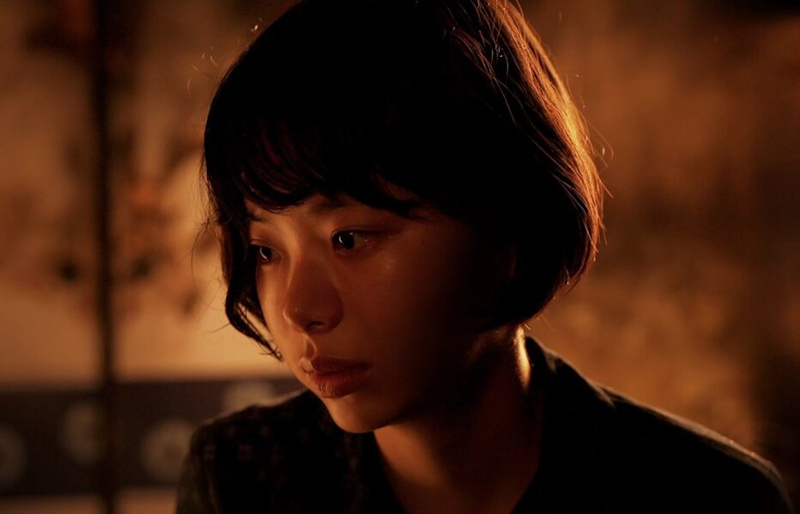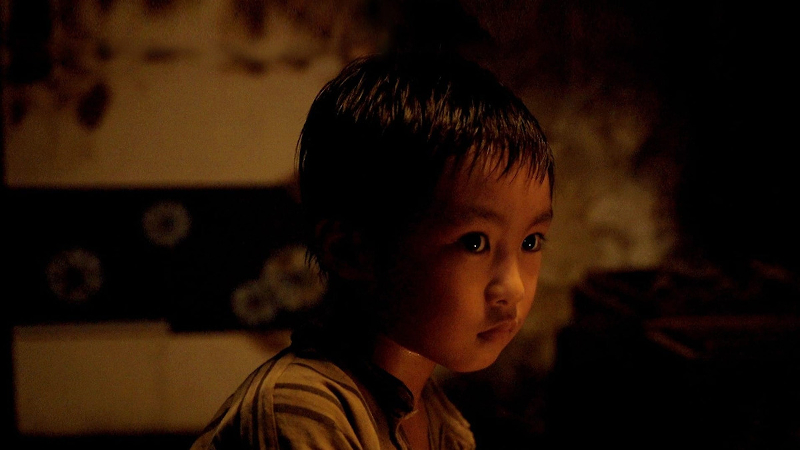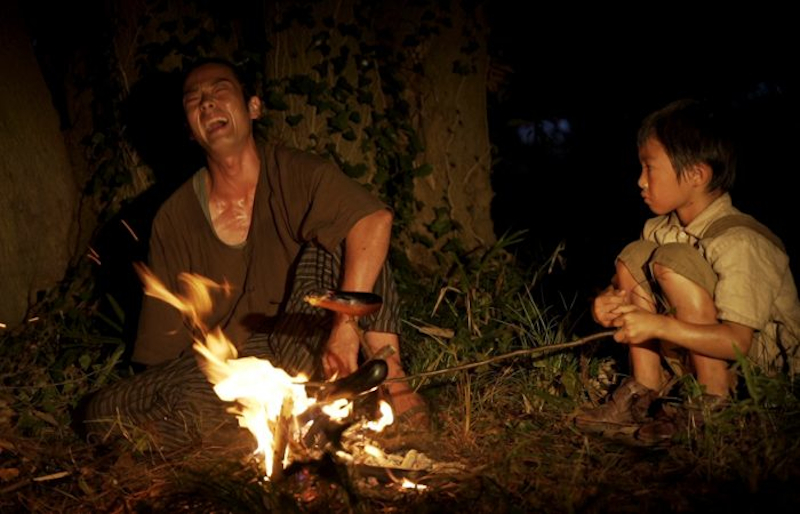Director – Shinya Tsukamoto – 2023 – Japan – Cert. 15 – 95m
****
A woman has drifted into prostitution, while a small boy struggles to survive in post-war Tokyo – plays UK cinemas in the Japan Foundation Touring Film Programme 2024 between Friday, 2nd February and Sunday, 31st March
An interior in the ruins of post-war Tokyo. A figure sleeps restlessly on a mat. A man hunts for a child who has broken in and is stealing food to survive. The man says to the waking woman (Shuri), “I approach the ones who look harmless – but who knows?” As he forces himself upon here, the image cuts away to decay on the walls. The woman’s hand, like a strange, disembodied limb, appears over a parapet fixture. The man goes out to solicit clients from the woman.
A soldier (Hiroki Kono) comes in, clearly in a bad way, drinks some Sake, pays the fee, then falls asleep. In the morning, she makes him breakfast. He asks to stay, promising to get work and pay his way, but after a day or so the young boy (Oga Tsukao), who she has taken under her wing, reports that he just sits in the same spot and does no work-hunting.

As the days pass, he cooks food brought by the boy and teaches the latter algebra (he was a teacher prior to military conscription). One night her asks the woman about her whoring, crossing a line because she tells him to leave tomorrow and never come back. Next day he throws the boy through a screen and attempts to force his attentions on the woman until the boy produces a handgun from his bag and, in our first glimpse of life outside the room, takes the man away across a charcoal coloured landscape of collapsed buildings and broken rooftop slates.
The woman, horrified that the boy has a gun, allows him to stay as her bodyguard whilst removing the gun to a biscuit tin so he won’t have to carry it around. In the ensuing days, she sews a button on his jacket and makes him a new shirt. When he comes in one night with a bloodied head, his words paint a vivid picture of desperate people throwing food from incoming trains to avoid officials so he can take that food to stallholders, and of his getting attacked by older boys.

The boy gets a job offer from a man who knows about the handgun: she makes him turn the job down, then tells him he has to leave. He isn’t good like her own child, who was killed. So he hooks up with the man offering the job (Mirai Moriyama) and they travel around, seeing men manhandle a boy who “was probably kidnapped and sold” and a madman imprisoned in a little hut like many others with whom the job man claims to have spent time.
Checking the ammunition in the gun – four bullets – the man takes the boy to visit an old acquaintance to settle a score. The genial acquaintance turns out to be an officer under whom he served who ordered a number of men in his unit to bayonet prisoners, who kill any of his troops who couldn’t or wouldn’t do so. The resultant eruption of violence, if brief, is in keeping with Tsukamoto’s wider body of work. After it’s all over, the man pays the boy.

He returns to the woman, but she sends him away, telling him she has a sickness and it’s contagious. She makes him promise to go out and get paying work; he leaves wordlessly to find work with her pimp, the stallholder we met at the start.
Characteristic outburst of violence notwithstanding, this is ostensibly a drama from Tsukamoto, focusing on the pain and confusion of the adults – the war-shocked men, the family-bereaved woman, and the numbness of the lone child who has somehow survived the firebombing against the odds. At one point about half-way through, he throws in a curious charred cityscape which appears to be an obvious scale model… inside a larger house interior, reminding one of the equally nonsensical human heads that appear over the top of buildings in Brazil (Terry Gilliam, 1985).
Without using the blue and yellow filters of Tetsuo II: Body Hammer (1992), this nevertheless colour codes its locations through set design – the earthy, brown interior of the first half hour when the woman is the centre of the film, the charcoal-hued exteriors when we first venture outside with the boy, the omnipresent green vegetation on the subsequent gun-job.

Where some Tsukamoto films frequently erupt into frenetic violent bouts, this one similarly focuses on trauma through a very different state, sleep. We first view the woman in a series of sleeping shots showing her to be restless. Both the two soldiers and the boy, on separate occasions, toss and moan in their sleep. On one hand, such scenes don’t move the narrative forward; in another, they suggest something about the state of the various characters and, by implication, a collective trauma suffered by the nation of Japan (something hinted at in the better Godzilla movies, among them Godzilla Minus One, 2023).
If this lacks the trademark frantic action and effects of Tsukamoto movie, as a drama exploring Japan’s post-war trauma through the inner lives of a small number of characters, it hits the mark. It might not be the best entry point to Tsukamoto, but those already familiar with him will find this both consistent with his wider body of work and fascinating.
Shadow of Fire plays UK cinemas in the Japan Foundation Touring Film Programme 2024 between Friday, 2nd February and Sunday, 31st March.
Trailer:
